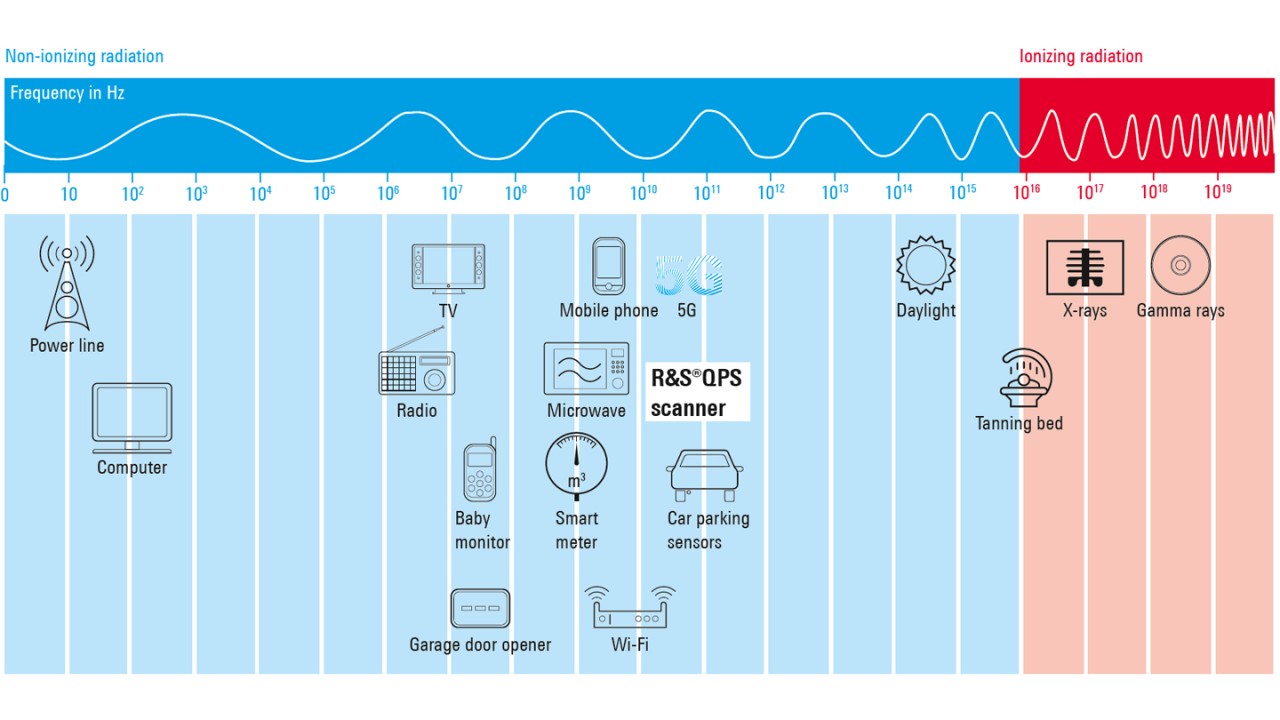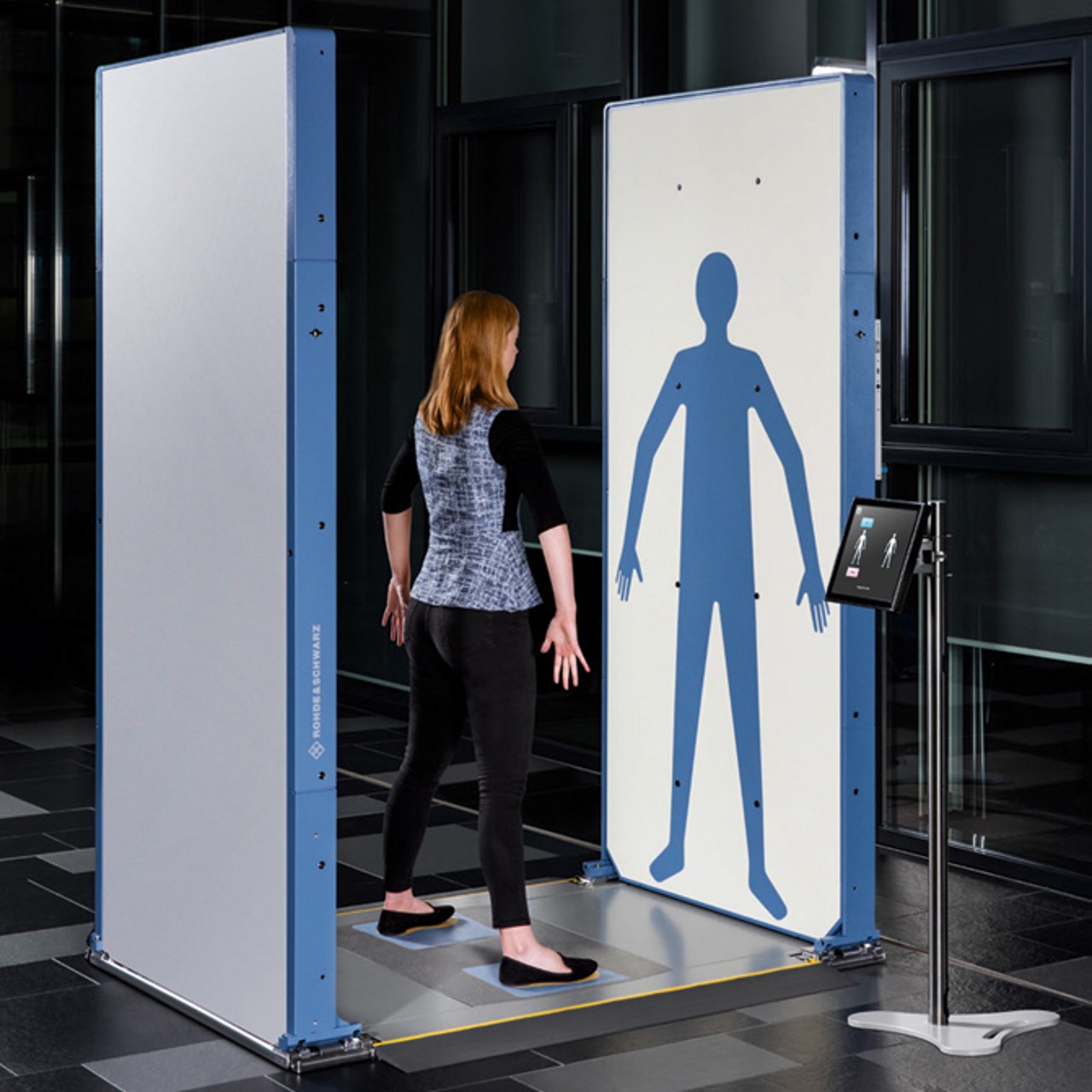Security through technology
The R&S®QPS quick personnel security scanners are new, high-resolution security scanners designed specifically to make people screening at security checkpoints faster, more effective and comfortable.

The R&S®QPS quick personnel security scanners are new, high-resolution security scanners designed specifically to make people screening at security checkpoints faster, more effective and comfortable.
High-resolution detection of concealed person-borne threats and contraband has been a challenge since advanced imaging technology (AIT) was introduced in security screening operations in the US and around the world over a decade ago.
Security operations have long demanded higher performance technology to support efficient checkpoint operations with the ability to detect an expanding range of threats and prohibited items. Today, the R&S®QPS quick personnel scanner technology provides security screening that is safe and effective with high-resolution and highperformance enhanced advanced imaging technology (eAIT).


The 70 GHz to 80 GHz frequency band enables the R&S®QPS system to accurately detect and locate many objects that are transparent to X-ray technology.
Advantages of millimeterwave technology
Most body scanning technologies today utilize either backscatter or transmission X-ray energy or, like the R&S®QPS, millimeterwave advanced imaging technology (AIT). Systems that use X-ray technology expose people to
ionizing radiation and often cannot detect opaque objects (including potential contraband or threat materials) because they appear transparent in the resulting images. The ability to make opaque objects visible is a key benefit of millimeterwave imaging, making it attractive for a wide variety of commercial and scientific applications.
Millimeterwave technology has other benefits as well: it uses non-ionizing radiation and emits far less electromagnetic energy than a modern mobile phone or Wi-Fi router.
The eAIT used in the R&S®QPS scanner is much higher in frequency than legacy AIT technologies, enabling much higher scan resolution. It operates in the 70 GHz to 80 GHz frequency range, similar to the frequencies used by vehicle park-assist applications, but at power levels thousands of times lower. This frequency range enables a scan resolution of some 1.9 mm, approximately a match head. The short wavelength allows the R&S®QPS system to accurately detect and locate anomalies and potential security threats with better resolution than other technologies, resulting in a higher probability of detection (Pd) and lower probability of false alarms (Pfa) than with other security scanners.


Passengers screening: With no moving parts, the R&S®QPS system collects over one billion measurement points faster than the blink of an eye.
Fast acquisition with results in 2.5 seconds or less
The R&S®QPS scanning system operates in near real time. Each panel contains an array of 3008 transmit and 3008 receive antennas. The scan process is a multistatic process where only one of the 3008 transmitters on each panel is active at a time and all 3008 receiving antennas capture the reflected signal. Because every transmitter rapidly steps through 128 frequencies before the next one starts transmitting, each scan cycle delivers more than a billion high-resolution measurements per panel. A single panel completes these measurements in just 32 ms, and a complete scan involving the front and rear panels takes just 64 ms. This is five times faster than the blink of an eye.
The fast scan time reduces the probability of an inadequate scan such as could occur in legacy systems if a person moves during their longer scan time. The multistatic process enables the flat panels to create a three-dimensional rendering of results. Digital backend processing combines the spatially diverse sets of antenna arrays and responses to produce the results. The billions of measurements collected during the scanning process are combined to create an avatar for the security operator. The result is either a PASS if no anomalies are detected, or a symbol placed over the location of the anomaly.


Precise, fast, high-resolution screening
The main measures of performance for scanning systems are the spatial resolution in the lateral and range directions and the available dynamic range. Improving the screening system’s resolution increases the Pd and reduces the Pfa. Because the R&S®QPS technology uses such a high frequency range and short wavelength, the system can detect emerging threats and much smaller quantities of material than other systems in use today.
This improved accuracy also reduces the number of time-consuming and invasive alarm resolution procedures (secondary security measures) that typically result from a large percentage of false positives.
A unique feature of multistatic coverage is the enhanced range resolution of the R&S®QPS at short distances. . With the dual panel arrangement, the system can be utilized for a near instantaneous scan on both sides. To keep the security line moving, the results of scans with an alarm can be sent to one of up to four secondary stations for subsequent security measures, enabling the system to continue processing the next people in line.


The open system design and comfortable scan pose improve the security check experience.
Improving and simplifying the screening process
The R&S®QPS looks, operates and performs scans differently from previous screening methods. The tight enclosed spaces of legacy body scanners are a thing of the past. The sleek, space-saving flat panels can be integrated into the checkpoint area without barriers. The open design gives security personnel an unobstructed view of the entire checkpoint. The scan procedure – often considered to be unpleasant in legacy systems that require people to hold their hands up in the air as if being stopped by police – is now significantly more comfortable and dignified for individuals. The arms are held slightly away from the body in a natural pose that is possible even for physically impaired individuals and is ethically appropriate across cultures.